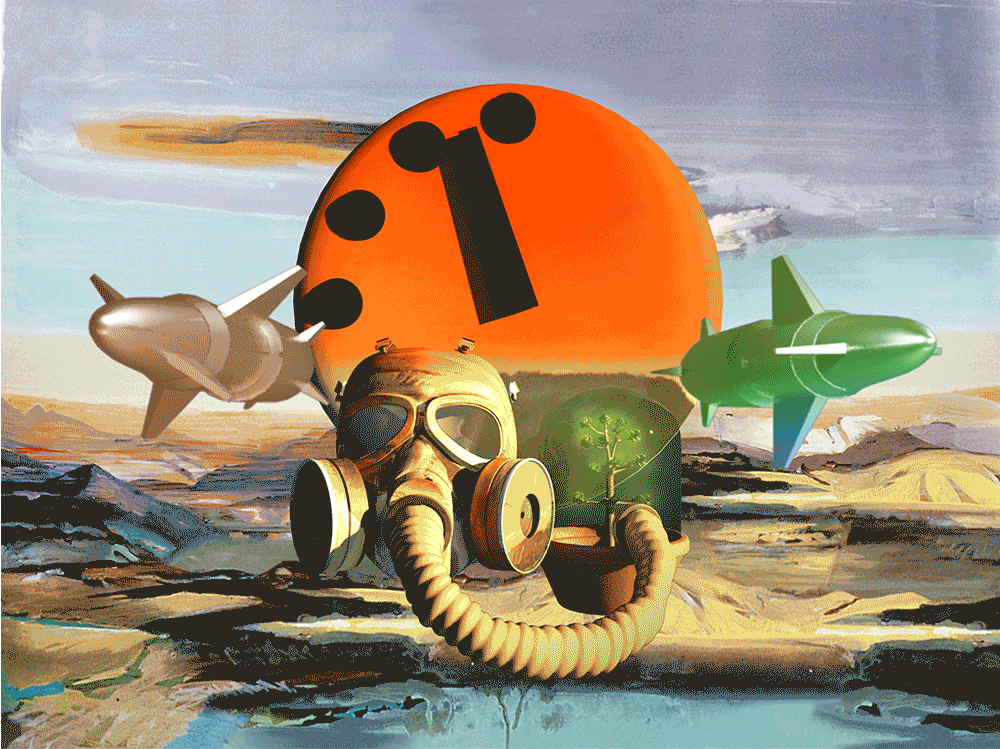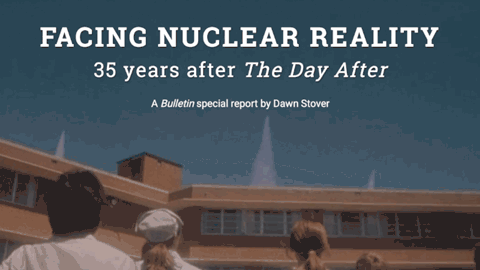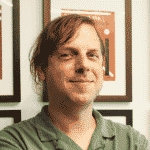Worth 1000 words: The Bulletin’s best new media
By Thomas Gaulkin | December 31, 2018
 A PHSCologram sculpture displayed by artist Ellen Sandor and (art)n at the May 2018 exhibit It’s Two Minutes to Midnight
A PHSCologram sculpture displayed by artist Ellen Sandor and (art)n at the May 2018 exhibit It’s Two Minutes to Midnight
The Bulletin’s writer’s guidelines stress that “our job is to tell a story.” My job as the publication’s first multimedia editor is to enhance our story-telling toolkit and develop new platforms for our esteemed coverage of existential threats like nuclear weapons and climate change. In 2018 we explored new ways to bring out the facts, science, and meaning behind the greatest challenges facing our world—from video features and audio interviews to animated infographics and interactive White House stationery.
In January, the Bulletin‘s Science and Security Board decided to move the symbolic Doomsday Clock forward to two minutes, the closest it’s been to midnight since 1953, in the midst of the Cold War. With millions of online viewers, the webcast of the change was arguably the Bulletin‘s most popular multimedia offering of 2018. The Clock featured in other novel settings this year too: an original song by a Bulletin intern; a Chicago high school’s performance at the world’s largest youth poetry slam; and a gallery exhibit on the art and design of the Clock, featuring a virtual reality tour and holographic installations.
Here are some favorite examples of the Bulletin’s multimedia coverage this year on nuclear risk, climate change, and disruptive technologies.
Facing nuclear reality
When Trump held his big summer encounter with Vladimir Putin in Helsinki, few knew what to expect. The Bulletin’s staff offered some suggestions for a summit theme song. Though the substance of the leaders’ private conversation remains vague to this day, some of the Bulletin‘s expert contributors called in immediately after their press conference to give some initial perspective on the outcome and the future of arms control between the two countries.
Our most impressive presentation on US-Russia politics, however, was undoubtedly contributing editor Dawn Stover’s special report on The Day After, a made-for-TV movie about a fictional nuclear attack on Lawrence, Kansas. The broadcast had an enormous impact on America’s national conversation about nuclear weapons in 1983. Stover brings that moment back to life with a deep and visual dive into the connections between Lawrence’s residents and foreign policy, and why it’s as relevant as ever 35 years on.
Say WHAT?
Ryan Zinke, who resigned this month under a thickening cloud of ethics investigations, may already be the former Secretary of the Interior at press time. But the fallout from his two years in office is likely to be felt for much longer. Zinke contributed to the greatest upending of regulations affecting stewardship of public lands, and repeatedly rejected expert assessments of issues ranging from land conservation to climate change (a subject the entire Trump administration is notoriously disinterested in). For the first video in the Bulletin’s new series on the role of expertise in public policy, we asked UCLA environmental law professor Sean Hecht to react to some of the most eyebrow-raising statements and actions from Zinke’s time as Secretary.
Unfunny comics
Former senior editor Lucien Crowder drew attention to an unusual pedagogical tool that the US Army Cyber Institute at West Point began to use this year to instill young soldiers with an appropriate degree of awareness about emerging technological threats. The Threatcasting Lab at Arizona State University produced a series of short graphic novels that bring cyber dangers to life. Can comics capture the peril soldiers may face in future wars? You decide.
The civic duties of scientists
If you need a reminder of what the Bulletin is all about, watch these remarks by particle physicist Yangyang Cheng that brought down the house at the organization’s annual dinner in November. Cheng (who received the 2017 Rieser Award for her essay on joining the March for Science) again deftly weaves scientific and cultural history with her personal experience as physicist, immigrant, and woman to ask whether she and her peers are ready to “put our careers and our bodies on the front lines in defense of our shared humanity.” Her conclusion should be no surprise to this website’s regular visitors, but bears repeating: “A scientist cannot retreat behind the notion of being a neutral explorer of nature, but must join the effort of moral pathfinding.”
North Korea is not crazy
After years of escalating rhetoric between the United States and North Korea, 2018 brought a sudden reversal of tensions that led to unprecedented announcement of a meeting between the countries’ leaders in Singapore. To get a fresh perspective on Kim Jong-un’s ambitions in the days leading up to the June 12 event, we spoke with University of Chicago professor Bruce Cumings, who’s made a career of overcoming the conventional wisdom on North Korea. When the summit was nearly cancelled, the Bulletin provided an annotated version of Trump’s letter to Kim to help explain why. And when the summit finally did happen, Trump surprised everybody with a bizarre multimedia presentation of his own.
Together, we make the world safer.
The Bulletin elevates expert voices above the noise. But as an independent nonprofit organization, our operations depend on the support of readers like you. Help us continue to deliver quality journalism that holds leaders accountable. Your support of our work at any level is important. In return, we promise our coverage will be understandable, influential, vigilant, solution-oriented, and fair-minded. Together we can make a difference.















